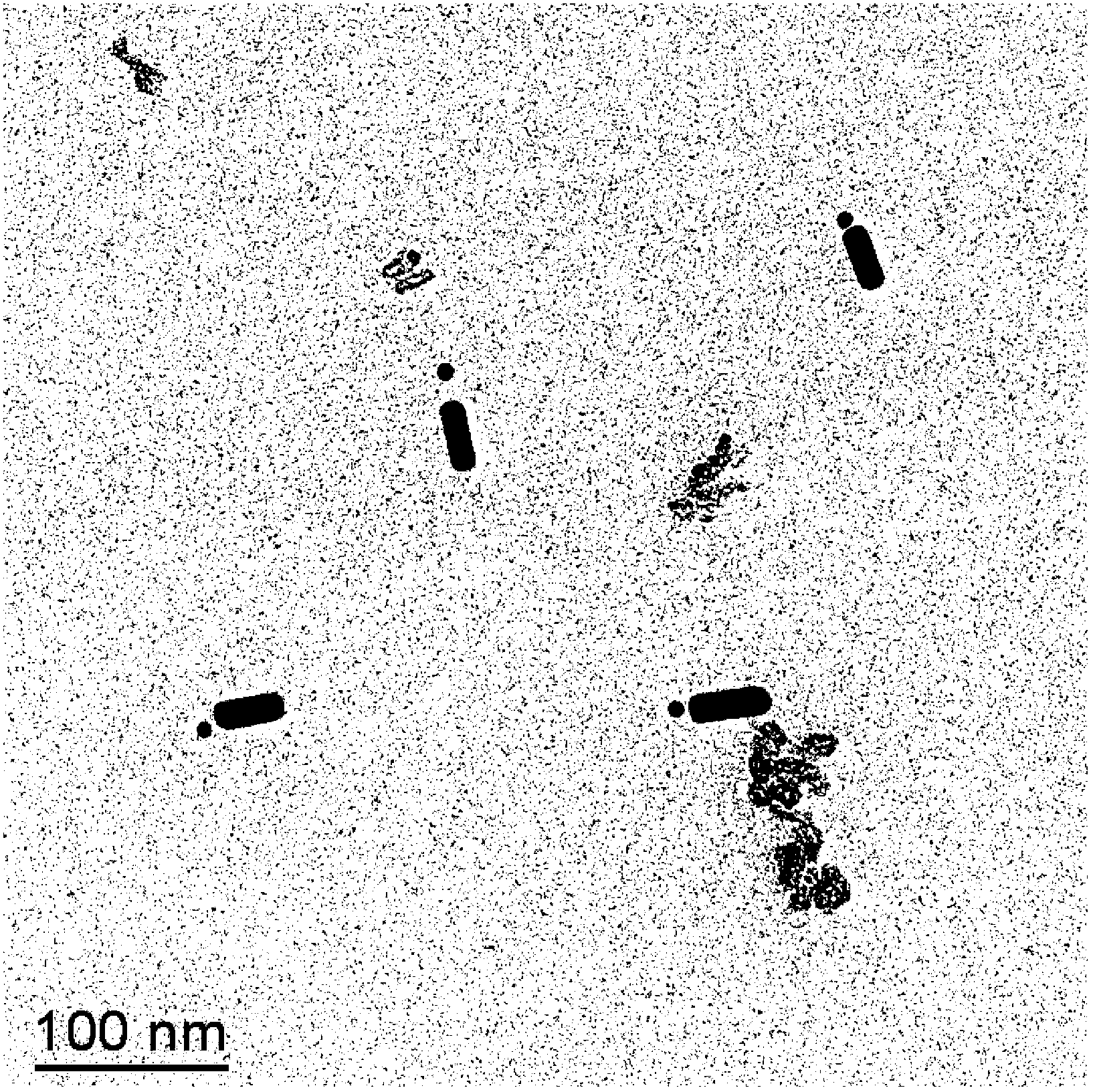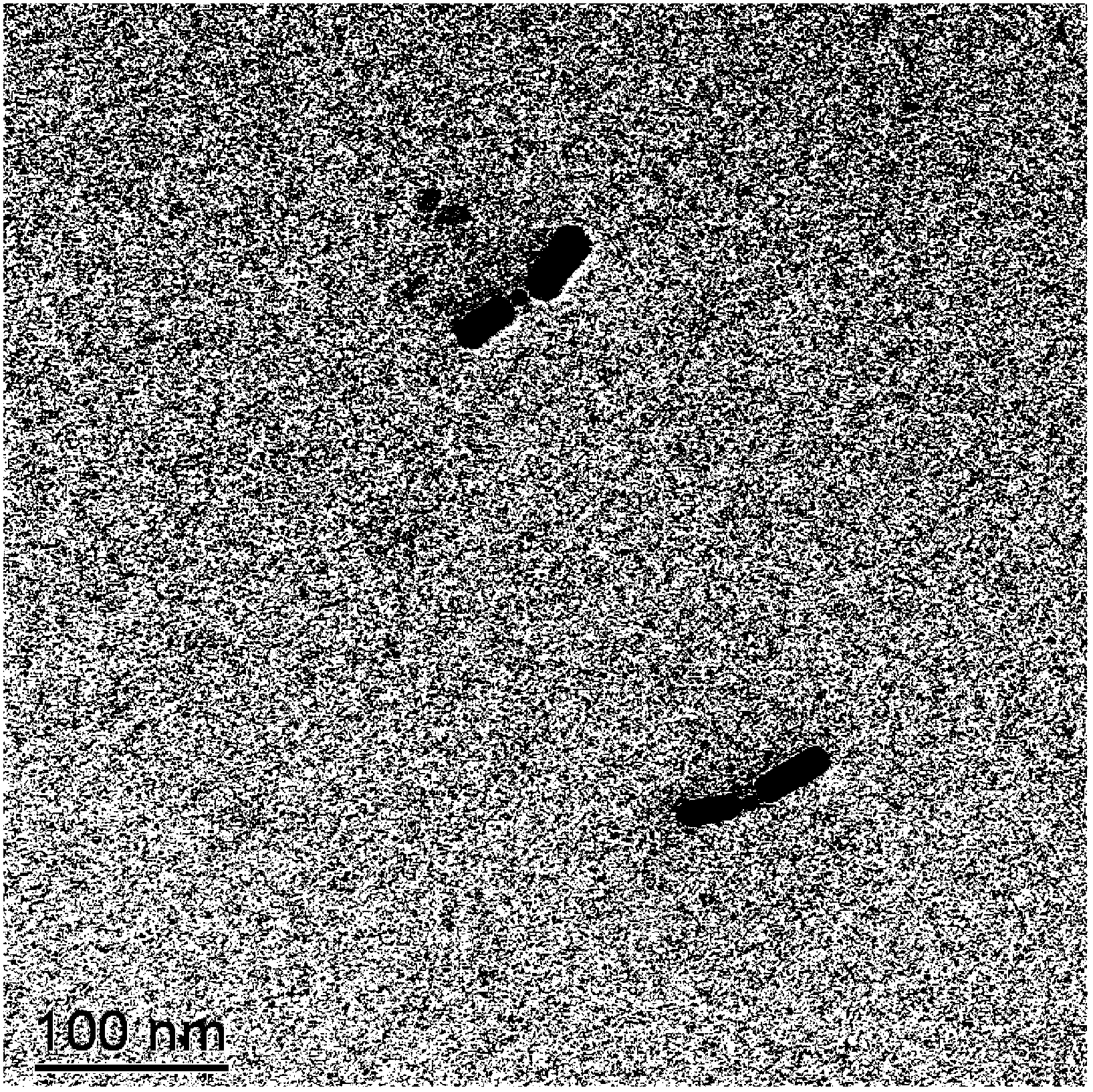Method for constructing nanoparticle-nanorod composite structure and constructed composite structure
A nanoparticle and composite structure technology, applied in the field of constructing composite structures of nanoparticles and nanorods, can solve problems such as research on optical characteristics of plasmonic elements
- Summary
- Abstract
- Description
- Claims
- Application Information
AI Technical Summary
Problems solved by technology
Method used
Image
Examples
Embodiment 1
[0053] 1. Construction of a 60nm×90nm two-dimensional DNA substrate connected with a single-stranded DNA probe
[0054] The sequences listed in Table 2 were used to replace the corresponding sequences in Table 1 to construct a 60 nm×90 nm two-dimensional DNA substrate connected with a single-stranded DNA probe. Specifically, use the serial numbers in Table 2 as Ball-4, Ball-6, Ball-128, Rod-215, Rod-201, Rod-200, Rod-177, Rod-176, Rod-152 and Rod-153 The sequence numbers in Table 1 are 4, 6, 128, 215, 201, 200, 177, 176, 152, and 153, respectively, based on the same method as the above-mentioned method for constructing a 60nm×90nm substrate to construct a single-stranded DNA 60nm x 90nm two-dimensional DNA substrate for probes. Therefore, on the constructed two-dimensional DNA substrate, there are connected single-stranded DNA probes protruding from the plane of the two-dimensional DNA substrate, and the sequence numbers are Rod-215, Rod-201, Rod-200, Rod-177, Rod-176, The s...
Embodiment 2
[0065] 1. Construction of a 60nm×90nm two-dimensional DNA substrate connected with a single-stranded DNA probe
[0066] The sequences listed in Table 3 were used to replace the corresponding sequences in Table 1 to construct a 60nmx90nm two-dimensional DNA substrate connected with a single-stranded DNA probe. Specifically, the serial numbers in Table 3 are Ball-4, Ball-6, Ball-128, Rod-215, Rod-201, Rod-200, Rod-177, Rod-176, Rod-152, Rod-153 , Rod-123, Rod-13, Rod-119, Rod-18, Rod-116, Rod-24 and Rod-112 sequences respectively replace the sequence numbers in Table 1 as 4, 6, 128, 215, 201, 200, 177, 176, 152, 153, 123, 13, 119, 18, 116, 24, and 112, based on the same method as the above method for constructing a 60 nm × 90 nm substrate to construct a 60 nm × 90 nm substrate with a single-stranded DNA probe attached Dimensional DNA substrate. Therefore, on the constructed two-dimensional DNA substrate, there are connected single-stranded DNA probes protruding from the plane ...
Embodiment 3
[0077] 1. Construction of a 60nm×90nm two-dimensional DNA substrate connected with a single-stranded DNA probe
[0078] Each sequence listed in Table 4 was used to replace the corresponding sequence in Table 1 to construct a 60 nm×90 nm two-dimensional DNA substrate connected with a single-stranded DNA probe. Specifically, use the serial numbers in Table 4 as Ball-4, Ball-6, Ball-128, Rod-215, Rod-201, Rod-200, Rod-177, Rod-176, Rod-152, Rod-153 , Rod-31, Rod-32, Rod-55, Rod-56, Rod-79, Rod-80 and Rod-102 respectively replace the sequence numbers in Table 1 as 4, 6, 128, 215, 201, 200, 177, 176, 152, 153, 31, 32, 55, 56, 79, 80, and 102, based on the same method as the above-mentioned method for constructing a 60 nm × 90 nm substrate to construct a 60 nm × 90 nm substrate with a single-stranded DNA probe attached. Dimensional DNA substrate. Therefore, on the constructed two-dimensional DNA substrate, there are connected single-stranded DNA probes protruding from the plane of...
PUM
| Property | Measurement | Unit |
|---|---|---|
| Diameter | aaaaa | aaaaa |
| Diameter | aaaaa | aaaaa |
Abstract
Description
Claims
Application Information
 Login to View More
Login to View More - R&D
- Intellectual Property
- Life Sciences
- Materials
- Tech Scout
- Unparalleled Data Quality
- Higher Quality Content
- 60% Fewer Hallucinations
Browse by: Latest US Patents, China's latest patents, Technical Efficacy Thesaurus, Application Domain, Technology Topic, Popular Technical Reports.
© 2025 PatSnap. All rights reserved.Legal|Privacy policy|Modern Slavery Act Transparency Statement|Sitemap|About US| Contact US: help@patsnap.com



